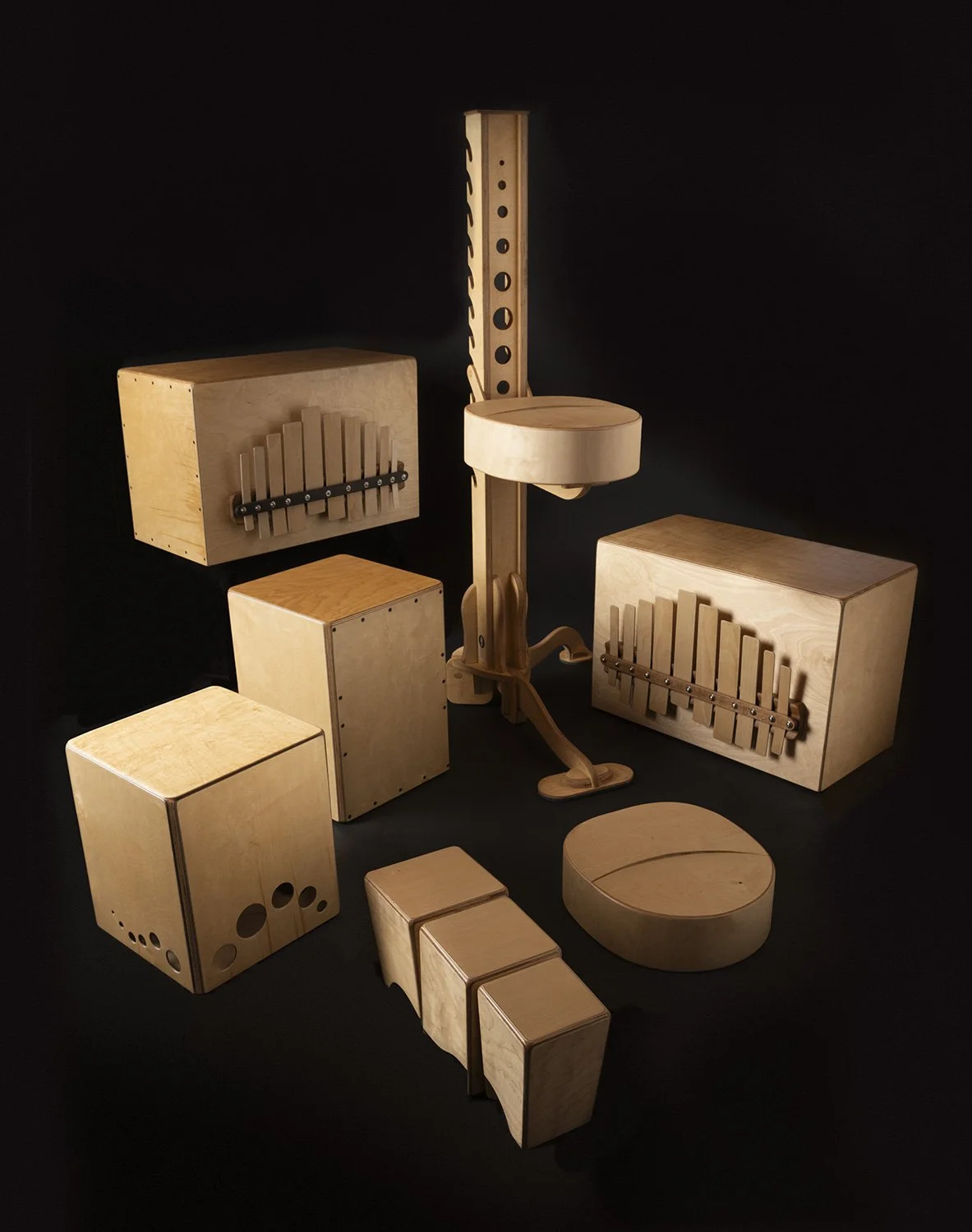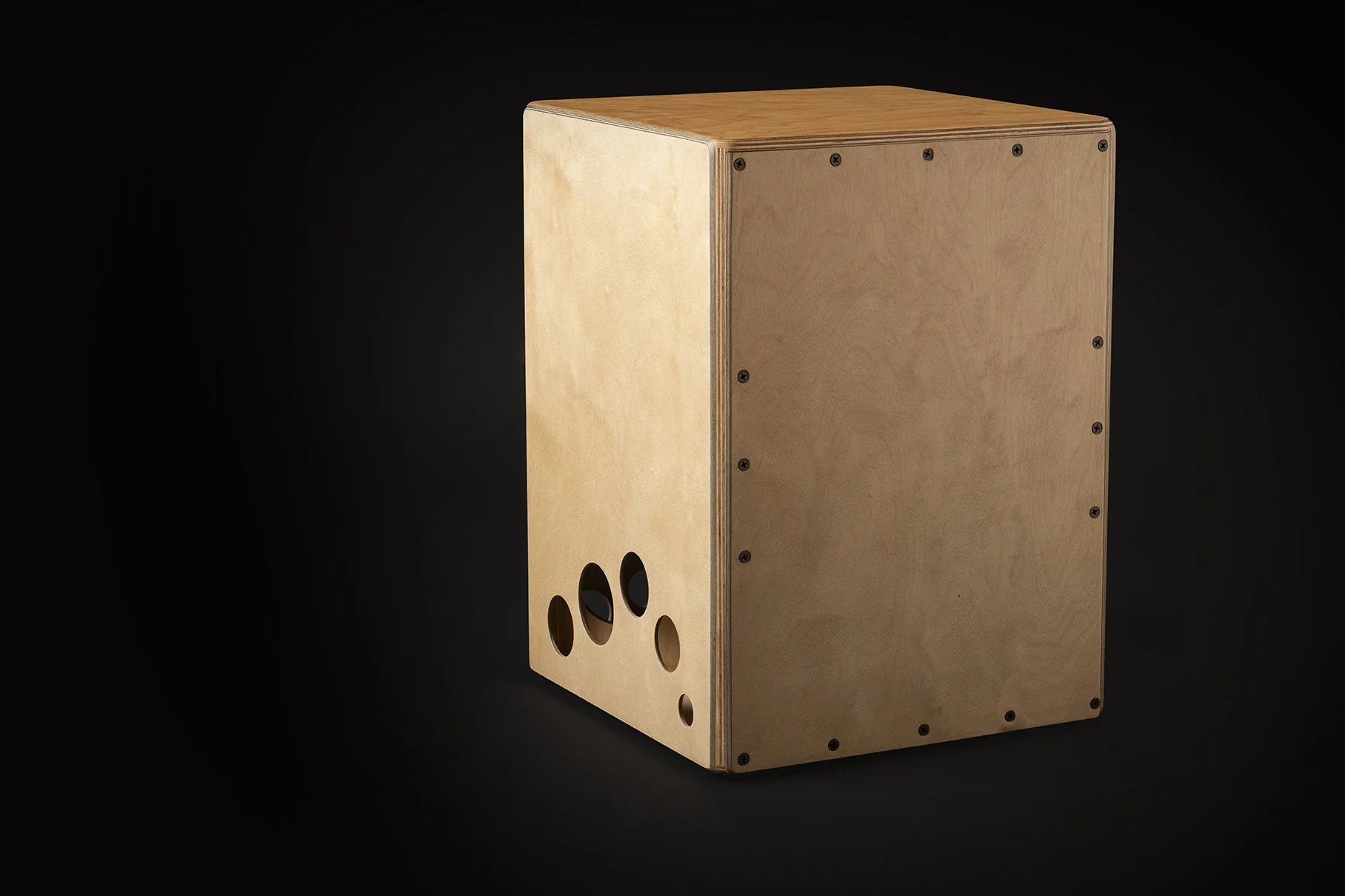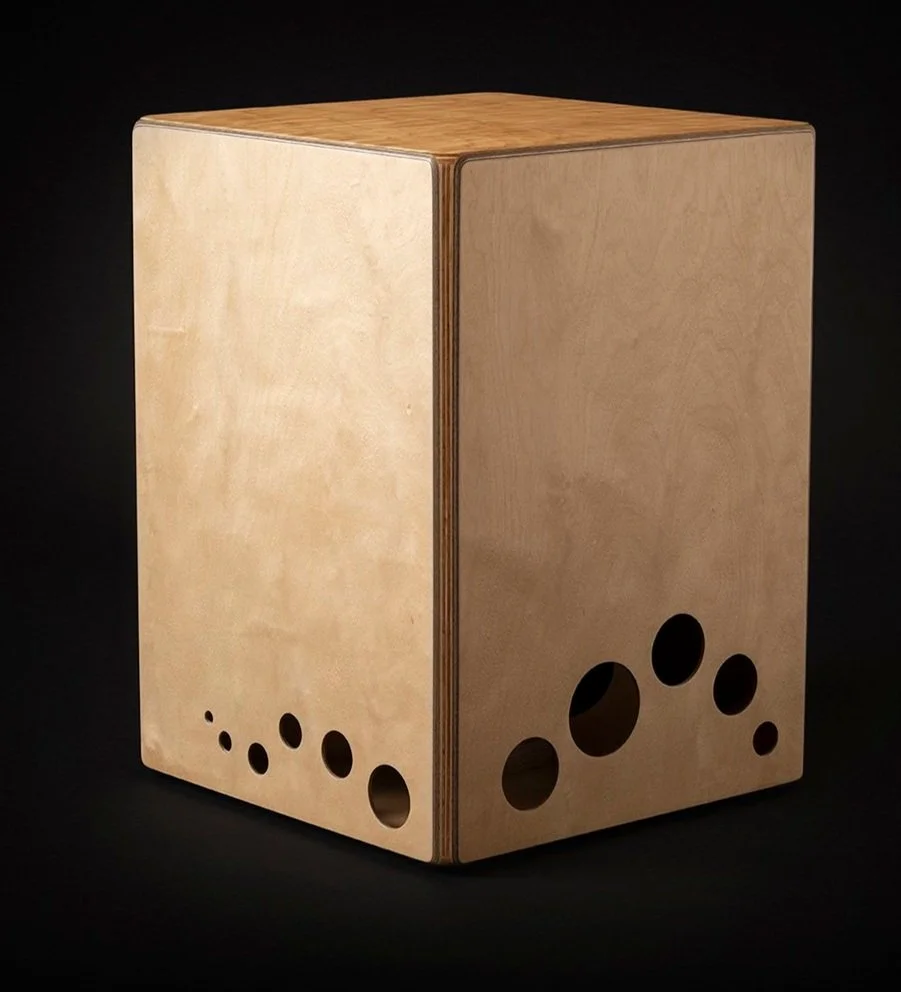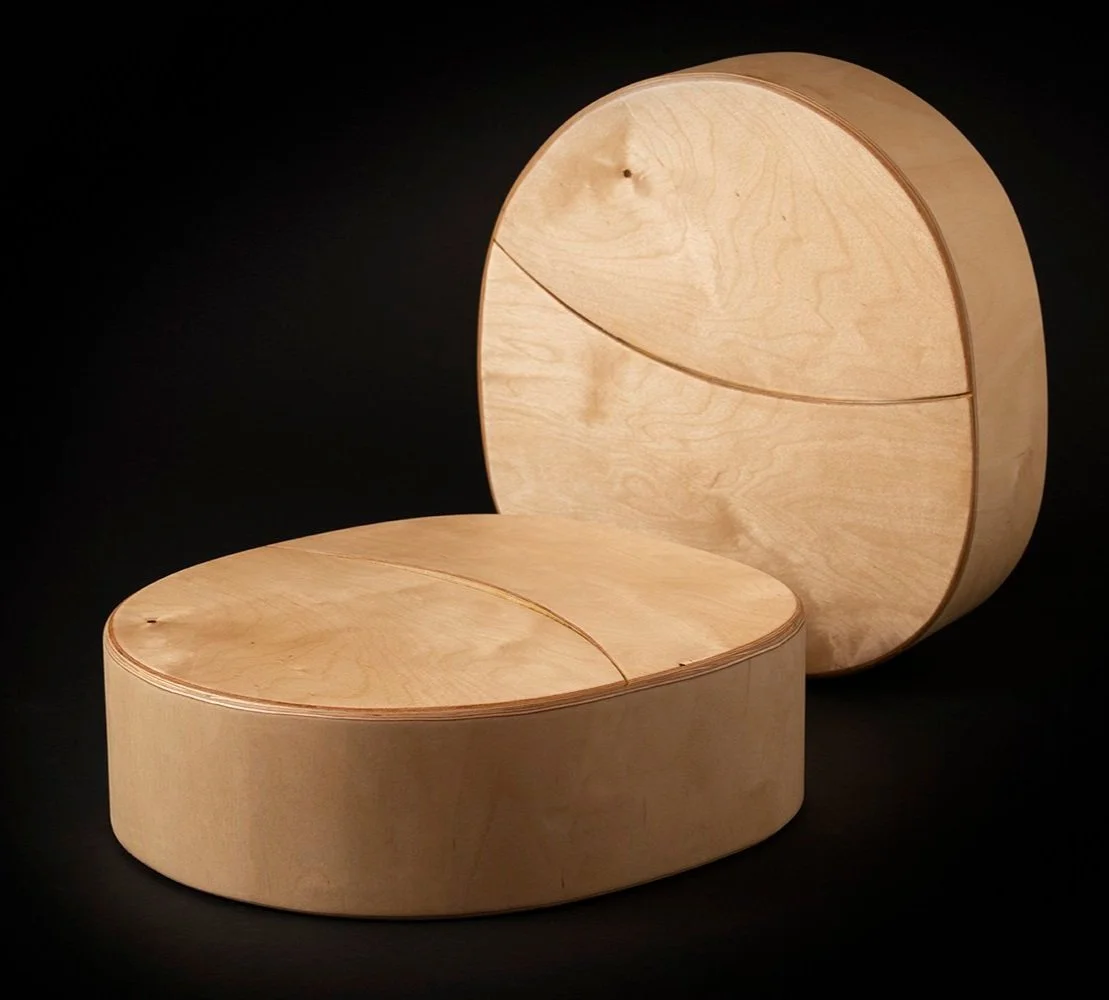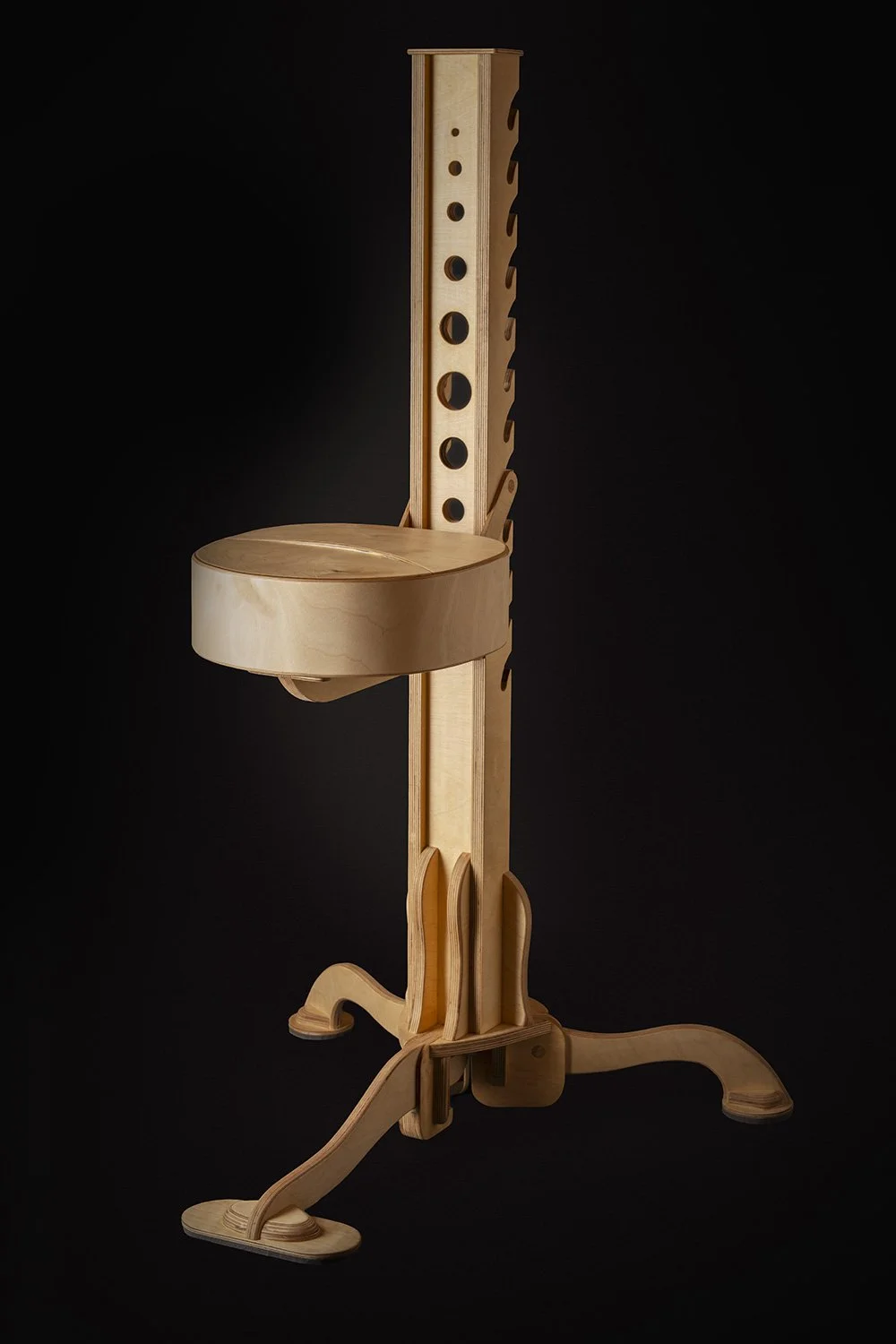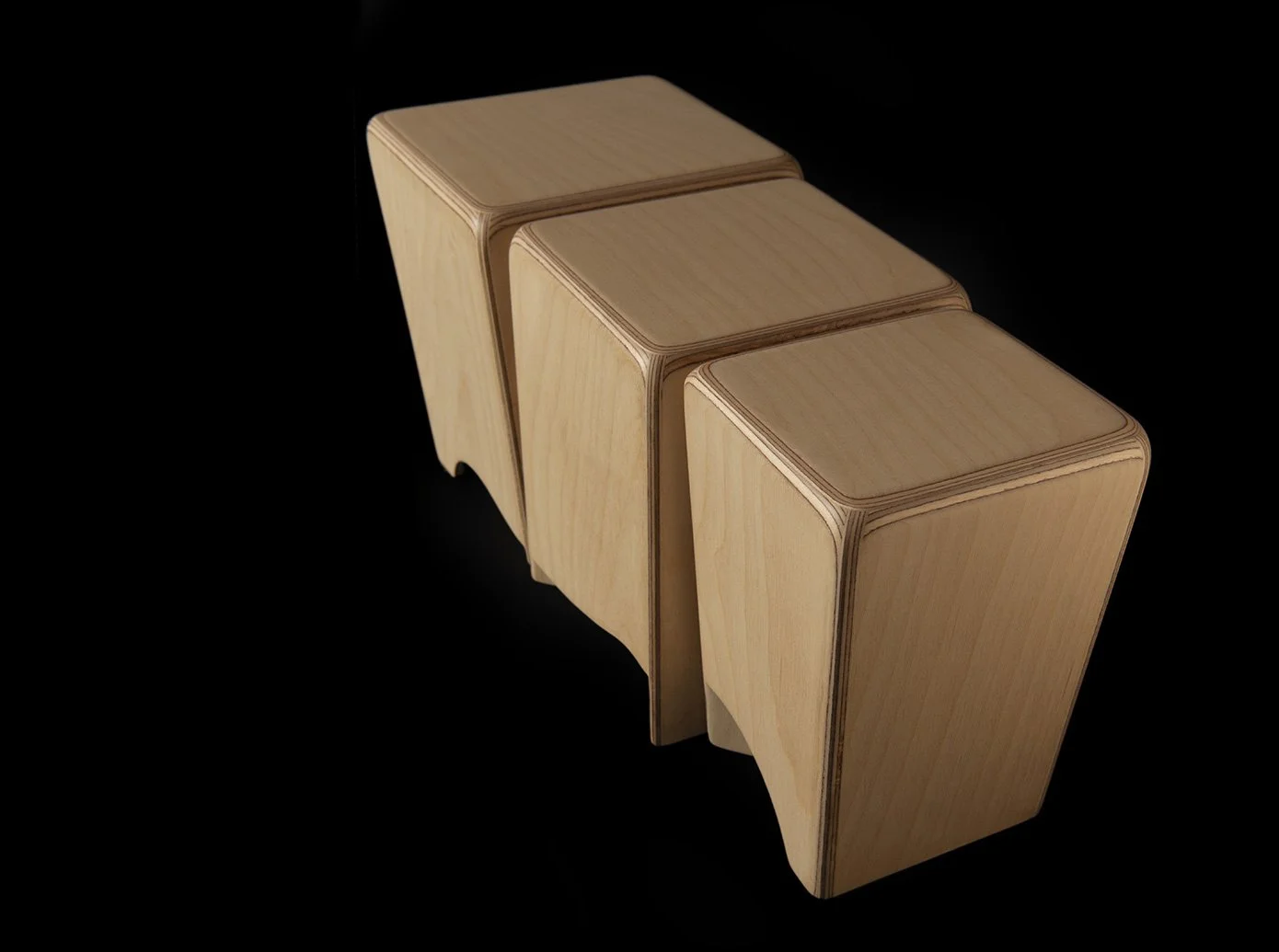The Travelling Instrument Project
I was commissioned to design and build seven tuned hand percussion instruments that would be made available to the Adelaide Hills community




The Travelling Instrument Project Video
This video is a deep dive into the project with demonstrations by world-class percussionist Fabian Hevia.
Travelling Instruments Project
In late 2024, the District Council of Mt Barker won a grant from Country Arts SA to commission me to design and build seven tuned percussion instruments. We have christened them, The Travelling Instrument Project. The proposal was that I’d build a range of instruments that would be available to the community.
I wanted to make professional-quality instruments available to as many people in the community as possible, so I included two adaptive instruments and a wheelchair friendly stand.
Each instrument has multiple drums built in that are in tune with each other, and all of the instruments are in tune with each other, so that every note is a good note. The intervallic relationship between the instruments is based on scaling the dimensions of the intervals of the Triple Bongo.
My approach to design has led me to build instruments around a rigid chassis. This does all of the structural work of controlling the forces applied to the instrument. This alleviates the playing faces and soundboards from any significant structural duties. The chassis creates a barrier for energy to leave the playing faces and soundboards, allowing them to resonate with more intensity and for longer.
This premise has opened the possibility of replacing areas of instruments that traditionally have been structural, with playing faces as well as removing mass. A traditional Cajon drum has a front playing face and three structural sides; my cajon design has a drum built into each of the four sides, to create four tuned playing faces with no increase in weight or footprint.
The unexpected by-product of this chassis strategy was that I could make hyper-functional instruments in different shapes that could satisfy alternative ergonomic requirements. This has opened the door to designing successful adaptive instruments. These are instruments that are comfortable to be played by people with confined movement and with varying physical abilities, whilst fulfilling all of the requirements of a high-grade instrument.
All of these instruments for this project have been made from plantation aircraft-grade Birch plywoods.
The line up!
Bass Marimbula
I began by working on the two Bass Marimbula, assuming that they'd be the most complex instruments of the project. Little did I know what a huge engineering and design undertaking the stand would be.
The two marimbula are proportionally different sizes. These are instruments that you sit on to play. It is plausible for two players to both sit on and play this instrument in unison. They both have ten-tines across the front and five tuned drums built into the back and sides. Each drum face is tuned in pitch to the next, and the two instruments are tuned in pitch relative to each other. The back face has a set of three drums working as a large Triple Bongo and two differently pitched Cajons on either end, a screwed face and a glued face.
Built into the base of the instruments is a soundboard that is braced in the same way I brace my guitars.
The braced soundboard is to expand the resonance and sustain of each note. The bass response of the tines is huge and creamy, with great sustain for a plucked instrument, not dissimilar to an upright Bass. The drums have a great attack and benefit from the physical size of the instrument, with additional grunt from the resonance of the soundboard.
These are a full-body experience.
Cajons
These two Cajon drums each have a tuned drum face built into each of the sides.
They are built around my X chassis design, so the structure has immense integrity. Initially, it eliminates any deflection when the player sits on the instrument. When the face is hit by the musician, the structure will reflect that energy back into the playing face, so it stays active for longer. The longer that the face vibrates, the greater the dynamic response and the richer the tonality.
There is no snare in either of these Cajons. I have observed that contact of a snare on the face greatly reduces the propagation of vibration in the face. For these drums, the top corners of the chassis and the face have a precise, minute gap. This offers a crisp bite when playing in the corners, so there is a sharp top note that cuts like the snare would, but with an uncompromised tonal range from the front face.
The smaller of these two instruments is a perfect size for younger people, but it is still great fun to play for adults.
Lap Bongos
The two Lap Bongos are double and triple-faced lap instruments and are adaptive instruments. Adaptive instruments are specifically designed to be played by people with disabilities. This design needed to facilitate instruments that could comfortably be played by a person in a youth’s wheelchair, and I wanted to make them very versatile to create opportunities for anyone who wanted to have a go. They can be held between your thighs, placed on your lap or on a table and on the specifically designed, height-adjustable stand to offer as many options as possible. Through my alternative instrument-making practice, I have been able to formulate a plan to make a powerful-sounding instrument that fits within this specific ergonomic framework.
Regular bongos are the natural enemy of player comfort. They are quite heavy, have sharp edges, and the ends of the bolts used to tune them up stick out from underneath. My triple bongo design goes a long way to remedy all of these issues and adds a third drum, but they were too wide and too tall to fit my brief. Over the years, I have made a number of multi-drum lap instrument prototypes with varying degrees of success, so I knew what didn’t work.
These instruments could be no more than 10cm tall, so the player's elbows could stay low to reduce fatigue from having to hold their elbows and shoulders up high to play them. I strategised how I could optimise an area with a footprint of 33cm X 36cm. I drew up an elegant curved form, then built a buck that I used to build frames for the top and back. I built the central coupling cartridge for the drum to be able to attach to the stand (see previous post) and created an internal structure that brings plenty of rigidity to the chassis.
The first instrument is a double-faced drum with the larger face closest to the player, and a triple-faced drum in a similar configuration. Like all of the other drums in this project, I am using a common intervallic relationship.
These instruments have a back with four sound holes, and a pleasant and unexpected by-product is that the tone varies depending on how they are played or held. On the stand, and between the thighs with the sound holes open, it has a considerably deeper tone. When the sound holes on the base are covered, and it’s placed on the lap of the player, the pitch rises.
I have been working towards consolidating multiple faces into a lap instrument for years, and I feel I have finally landed on some really solid design principles that fulfil all of my objectives: a multi-faced, compact, comfortable, lightweight and beautiful-sounding lap drum with a big voice. My previous iterations had each had aspects that made them special, but this design combines ergonomics, simplicity, tonal complexity and melodic opportunity with three playing faces in such close proximity.
I can see a drum like this being useful not only for folk with a disability but also for aged care and children. For dexterous professional musicians, they offer an alternative layout with all three drums playable across the fingers of one hand.
The Adaptive Instrument Stand
My goal was to make the two adaptive instruments as easy to use for as many people in the community as possible. I did a recce to a local group that runs a weekly percussion session for people with disabilities, where I took measurements of wheelchairs and asked lots of questions. I then consulted an Occupational Therapist, where I walked through what I had learnt and what I was trying to achieve. We concluded that a purpose-built stand was the answer. A device that could securely hold a specific instrument in a comfortable position for the widest variety of players.
The stand needed to be easy to transport, simple and quick to set up, sturdy enough to hold an instrument being played, height adjustable, self-contained with no detachable parts that could be lost, and it needed to sit well with the aesthetic of the instruments.
The starting point was to come up with a secure coupling system. I settled on a built-in cartridge in the centre of the underside of the instrument. The instrument slips down over a corresponding arm on the stand, and with a small push forward, it locks into position.
Once I knew how they would go together, I could look at how to address the height adjustment of the stand. I found an old design for bench slaves. A bench slave is an adjustable stand used to hold the end of a long piece of timber that is being held in a vice on a bench. This gave me 6cm increments from below a standard chair height to a comfortable standing position for a tall person.
The folding leg system that has the legs locking in place when both folded and open was immensely challenging to conceive and refine. I used cardboard and bits of dowel to work out the mechanism, then made MDF prototypes before committing to the final build. Refining this down to a simple resolve took many hours of thinking.
I’m chuffed that it does what it needs to do. It’s compact enough to transport and easy to assemble, and the instruments feel sturdy when being played on it.
Triple Bongos
A few years ago, I set out to reimagine the humble bongo from the ground up. I was originally focused on weight removal and player comfort. The unexpected outcome was, that in the same footprint as a traditional bongo, I could include a third, higher-pitched drum. Having a third note opens up the pathway to playing melodic supporting patterns, and it completely revolutionises soloing.
With this design, I’ve packaged in a third drum, halved the weight, eliminated tuning, and removed all sharp edges, and most importantly, they sound incredible. They have a warm tone with great attack, distinct variation in tones across each playing face, and loads of volume.


